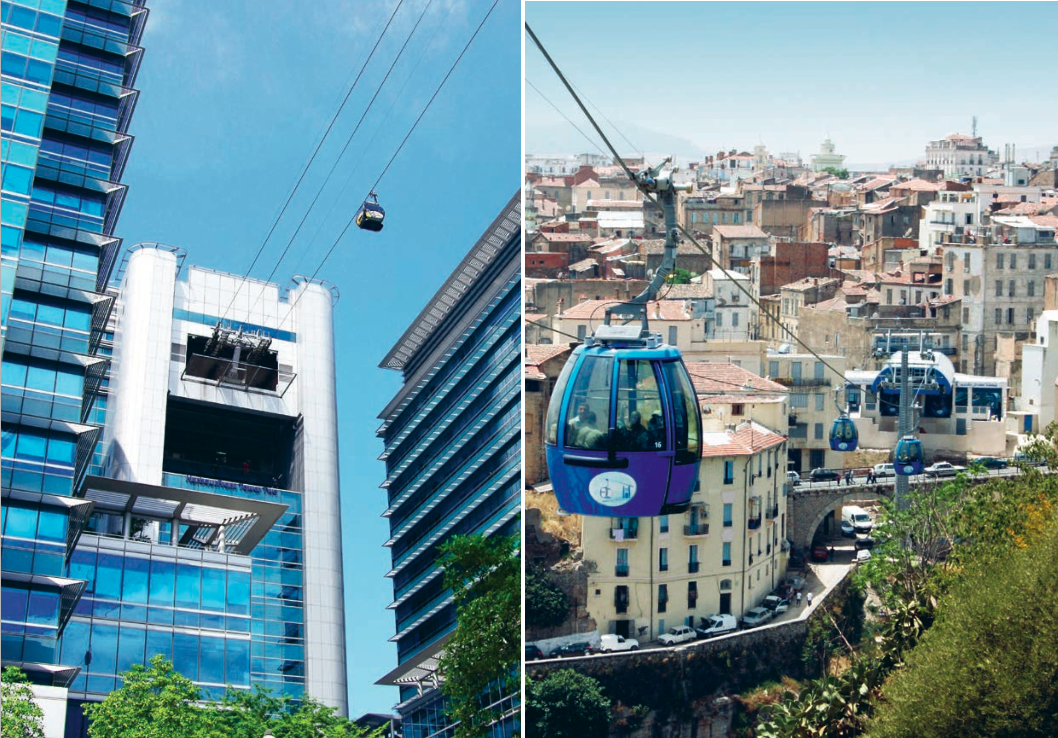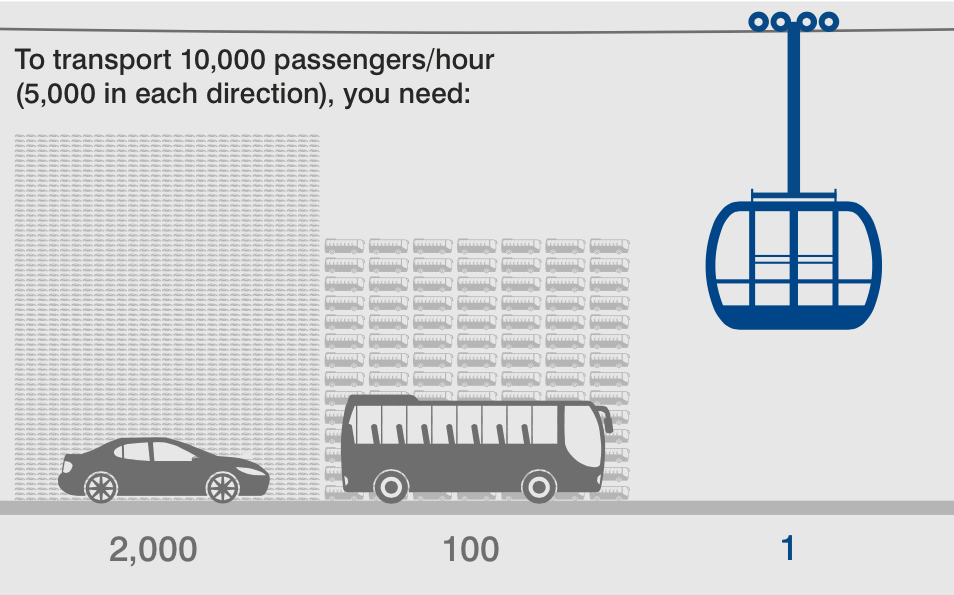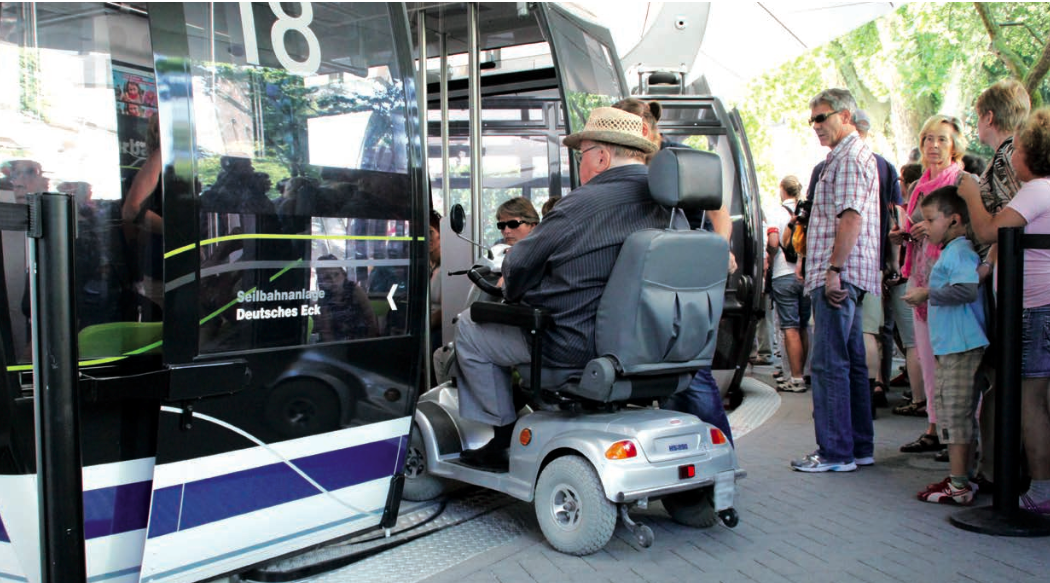
According to Doppelmayr, a ropeway with a 3,600 person capacity can use as little as 0.1kWh of power to carry one passenger over 1km — the same amount of energy consumed by a hair dryer in 5 minutes!
Earlier this year, Doppelmayr Urban Solutions produced an attractively art directed brochure-cum-magazine called Ropeways in the urban environment. It compiles the many benefits of cable cars (or ropeways as they’re called in the industry) as urban transportation.
The following is a summary of the magazine’s main points. The content is very useful for anyone looking to write a top-10 list or giving a presentation. The truly time-starved can skip to the last section for the key features at a glance.
- Ropeways complement other forms of urban transit, easily integrating into existing infrastructure. They continuously operate, so there is no need for other modes of transit to modify their own schedules just to accommodate them.
- Service is continuous. So the other side of the first point is no schedules for ropeway passengers to memorize and adhere to, and no long waiting periods in ropeway stations.
- They have their own dedicated and uninterrupted route. There are no traffic jams 20 metres overhead.
- Formerly outlying neighbourhoods thrive when connected.
- Capacity — Ropeways can carry up to 5,000 passengers per hour and direction.
- Capacity — Cabins can carry up to 35 passengers, plus bikes, wheelchairs, strollers and baggage. In other words, they allow barrier-free access for all riders.
- Ropeways are statistically the world’s safest means of transit.
- They easily integrate into neighbourhoods, requiring minimal structural footprints. (Indeed, in some cities stations have been built high up in skyscrapers.)
- They have minimal environmental impact. The Koblenz Seilbahn, consumes as little as 0.1kwh to transport one rider over a distance of 1km. This is equivalent to the amount of energy a hair dryer uses in 5 minutes.
- To transport 10,000 passengers in an hour, you need 100 buses, 2,000 cars or one ropeway. So, for the capacity, ropeways are a cost-effective solution for cash-strapped transit authorities and city governments.
- Robustness — Built for mountaintop conditions, many ropeway systems can continue operating in winds up to 100km/h.
- Comfort need never be a problem. Cabins can easily be heated, cooled and supplied with infotainment systems and Wi-Fi.
- Ropeway infrastructure is relatively easy to build and it goes up fast — perfect for already-clogged cities with lots of construction on the go and in a hurry to get moving.
- Stations and towers can be adapted to blend in with the local architecture.

A gondola can offset a huge number of car and bus trips.
ROPEWAYS ARE MULTI-PURPOSE. CONSIDER THESE MANY APPLICATIONS.
- Ropeways can fill gaps between busy zones that generate traffic, like hospitals and other outlying infrastructure.
- They are ideal for connecting organizationally linked facilities that are physically removed, like a campus, factory or exhibition grounds.
- You can use them to bridge otherwise difficult-to-cross barriers, inexpensively.
- They extend or relieve existing urban transit systems, cost-effectively.
- Ropeways generate a new source of advertising revenue. Passengers are a captive audience for the length of their ride.

Ropeways provide barrier-free access.
KEY FEATURES AT A GLANCE (FOR THOSE WITH NO TIME)
- Fully automatic operation
- High capacity due to continuous operation
- Short, low-cost construction phase
- Minimal space requirements
- Easy integration with existing transport systems
- Barrier-free movement
- World’ssafest means of transport
- Minimal environmental impact
The magazine shows examples of urban ropeways from around the world. You can download ‘Ropeways in the urban environment’ free.
Materials on this page are paid for. Gondola Project (including its parent companies and its team of writers and contributors) does not explicitly or implicitly endorse third parties in exchange for advertising. Advertising does not influence editorial content, products, or services offered on Gondola Project.
